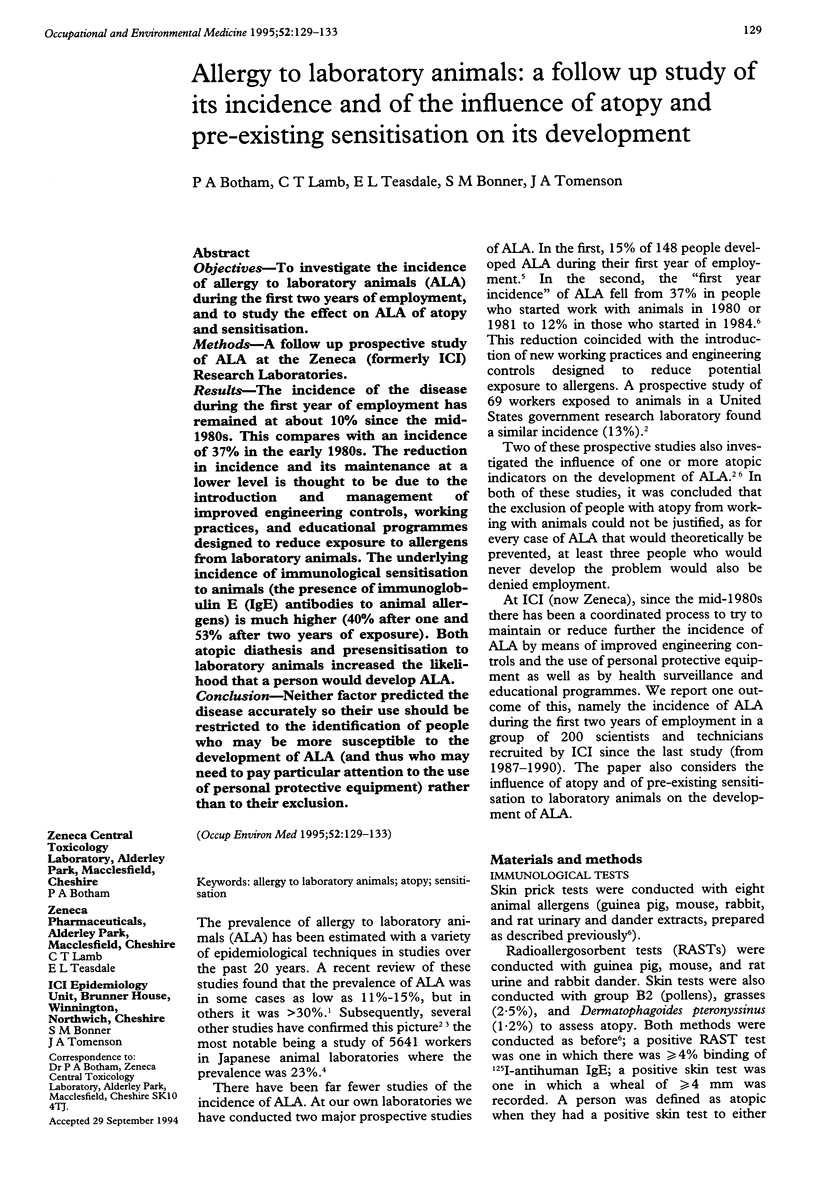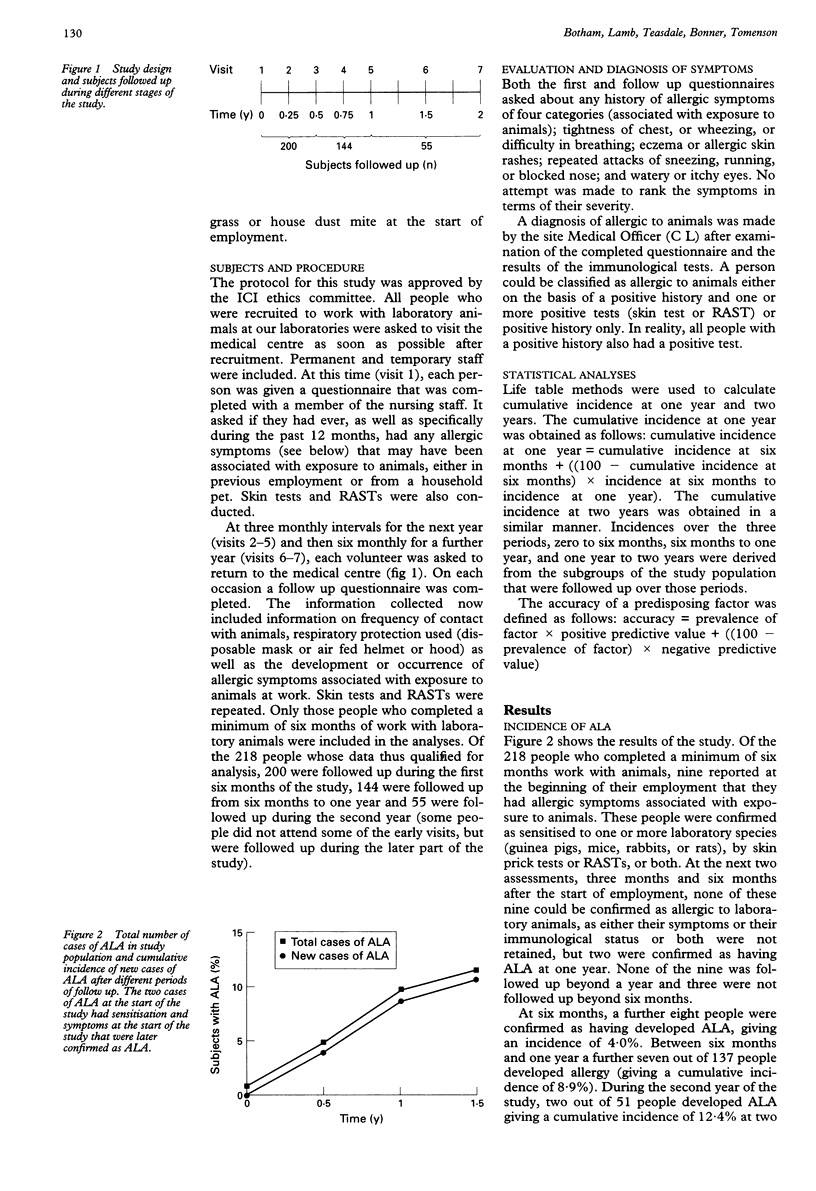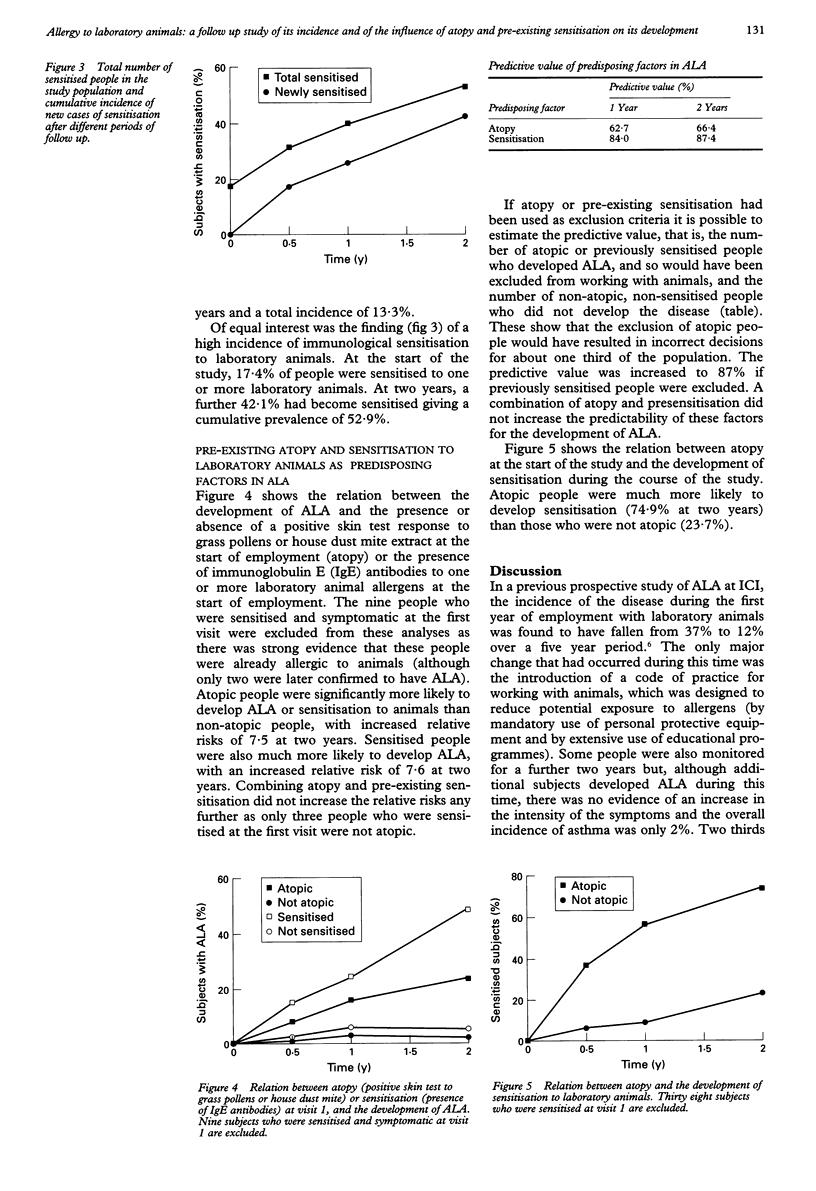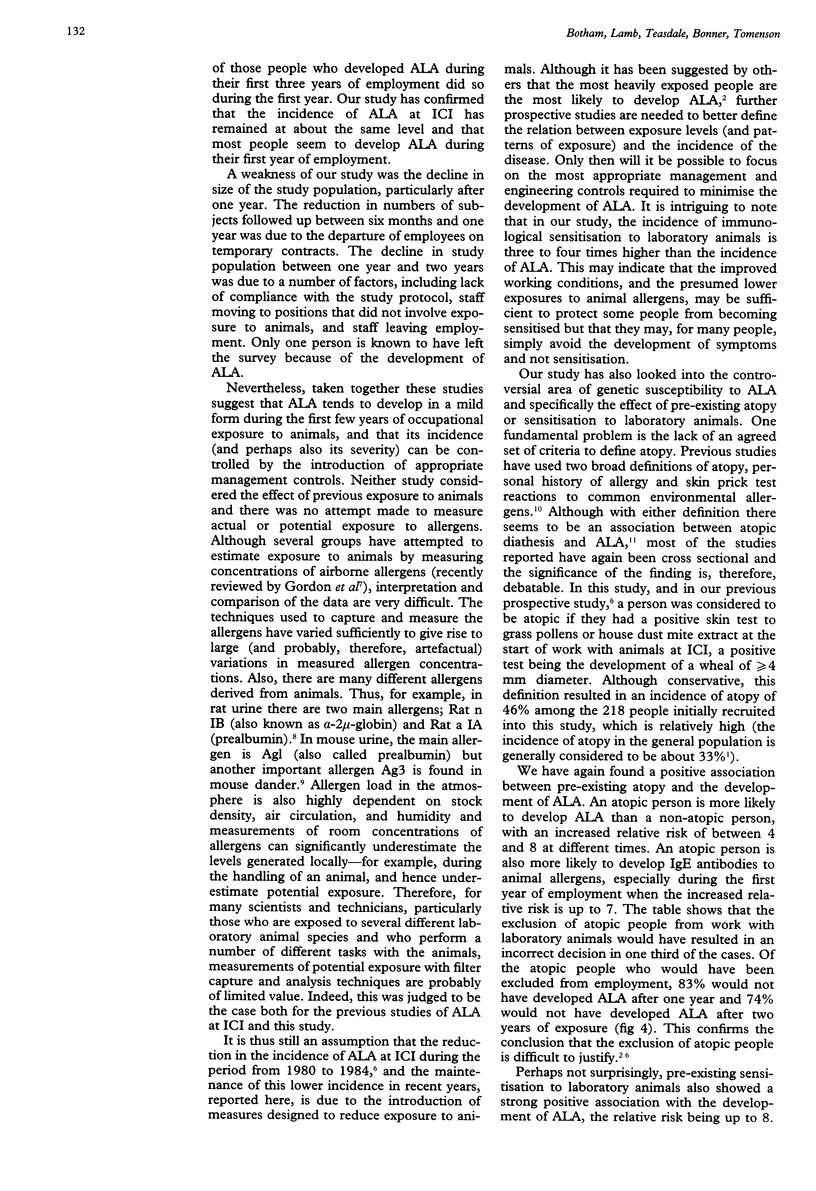Abstract
OBJECTIVES--To investigate the incidence of allergy to laboratory animals (ALA) during the first two years of employment, and to study the effect on ALA of atopy and sensitisation. METHODS--A follow up prospective study of ALA at the Zeneca (formerly ICI) Research Laboratories. RESULTS--The incidence of the disease during the first year of employment has remained at about 10% since the mid-1980s. This compares with an incidence of 37% in the early 1980s. The reduction in incidence and its maintenance at a lower level is thought to be due to the introduction and management of improved engineering controls, working practices, and educational programmes designed to reduce exposure to allergens from laboratory animals. The underlying incidence of immunological sensitisation to animals (the presence of immunoglobulin E (IgE) antibodies to animal allergens) is much higher (40% after one and 53% after two years of exposure). Both atopic diathesis and presensitisation to laboratory animals increased the likelihood that a person would develop ALA. CONCLUSION--Neither factor predicted the disease accurately so their use should be restricted to the identification of people who may be more susceptible to the development of ALA (and thus who may need to pay particular attention to the use of personal protective equipment) rather than to their exclusion.
Full text
PDF




Selected References
These references are in PubMed. This may not be the complete list of references from this article.
- Aoyama K., Ueda A., Manda F., Matsushita T., Ueda T., Yamauchi C. Allergy to laboratory animals: an epidemiological study. Br J Ind Med. 1992 Jan;49(1):41–47. doi: 10.1136/oem.49.1.41. [DOI] [PMC free article] [PubMed] [Google Scholar]
- Botham P. A., Davies G. E., Teasdale E. L. Allergy to laboratory animals: a prospective study of its incidence and of the influence of atopy on its development. Br J Ind Med. 1987 Sep;44(9):627–632. doi: 10.1136/oem.44.9.627. [DOI] [PMC free article] [PubMed] [Google Scholar]
- Das R., Tager I. B., Gamsky T., Schenker M. B., Royce S., Balmes J. R. Atopy and airways reactivity in animal health technicians. A pilot study. J Occup Med. 1992 Jan;34(1):53–60. [PubMed] [Google Scholar]
- Davies G. E., Thompson A. V., Niewola Z., Burrows G. E., Teasdale E. L., Bird D. J., Phillips D. A. Allergy to laboratory animals: a retrospective and a prospective study. Br J Ind Med. 1983 Nov;40(4):442–449. doi: 10.1136/oem.40.4.442. [DOI] [PMC free article] [PubMed] [Google Scholar]
- Eggleston P. A., Newill C. A., Ansari A. A., Pustelnik A., Lou S. R., Evans R., 3rd, Marsh D. G., Longbottom J. L., Corn M. Task-related variation in airborne concentrations of laboratory animal allergens: studies with Rat n I. J Allergy Clin Immunol. 1989 Sep;84(3):347–352. doi: 10.1016/0091-6749(89)90419-3. [DOI] [PubMed] [Google Scholar]
- Gordon S., Tee R. D., Lowson D., Wallace J., Newman Taylor A. J. Reduction of airborne allergenic urinary proteins from laboratory rats. Br J Ind Med. 1992 Jun;49(6):416–422. doi: 10.1136/oem.49.6.416. [DOI] [PMC free article] [PubMed] [Google Scholar]
- Hunskaar S., Fosse R. T. Allergy to laboratory mice and rats: a review of the pathophysiology, epidemiology and clinical aspects. Lab Anim. 1990 Oct;24(4):358–374. doi: 10.1258/002367790780865877. [DOI] [PubMed] [Google Scholar]
- Kibby T., Powell G., Cromer J. Allergy to laboratory animals: a prospective and cross-sectional study. J Occup Med. 1989 Oct;31(10):842–846. doi: 10.1097/00043764-198910000-00010. [DOI] [PubMed] [Google Scholar]
- Lutsky I. I., Kalbfleisch J. H., Fink J. N. Occupational allergy to laboratory animals: employer practices. J Occup Med. 1983 May;25(5):372–376. [PubMed] [Google Scholar]
- Newill C. A., Evans R., 3rd, Khoury M. J. Preemployment screening for allergy to laboratory animals: epidemiologic evaluation of its potential usefulness. J Occup Med. 1986 Nov;28(11):1158–1164. [PubMed] [Google Scholar]
- Price J. A., Longbottom J. L. Allergy to mice. I. Identification of two major mouse allergens (Ag 1 and Ag 3) and investigation of their possible origin. Clin Allergy. 1987 Jan;17(1):43–53. doi: 10.1111/j.1365-2222.1987.tb02318.x. [DOI] [PubMed] [Google Scholar]
- Sjöstedt L., Willers S. Predisposing factors in laboratory animal allergy: a study of atopy and environmental factors. Am J Ind Med. 1989;16(2):199–208. doi: 10.1002/ajim.4700160211. [DOI] [PubMed] [Google Scholar]
- Slovak A. J., Hill R. N. Does atopy have any predictive value for laboratory animal allergy? A comparison of different concepts of atopy. Br J Ind Med. 1987 Feb;44(2):129–132. doi: 10.1136/oem.44.2.129. [DOI] [PMC free article] [PubMed] [Google Scholar]


